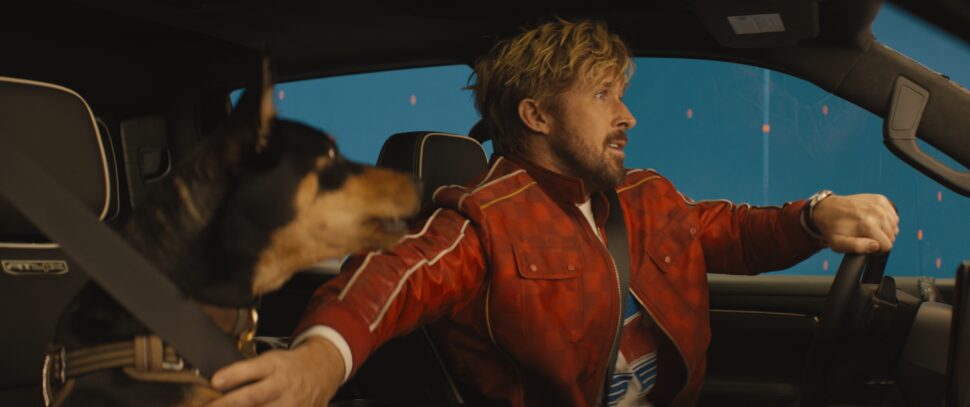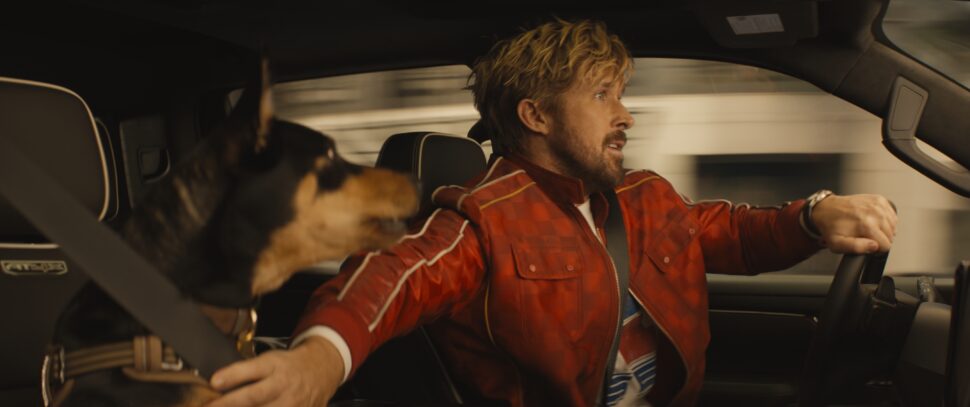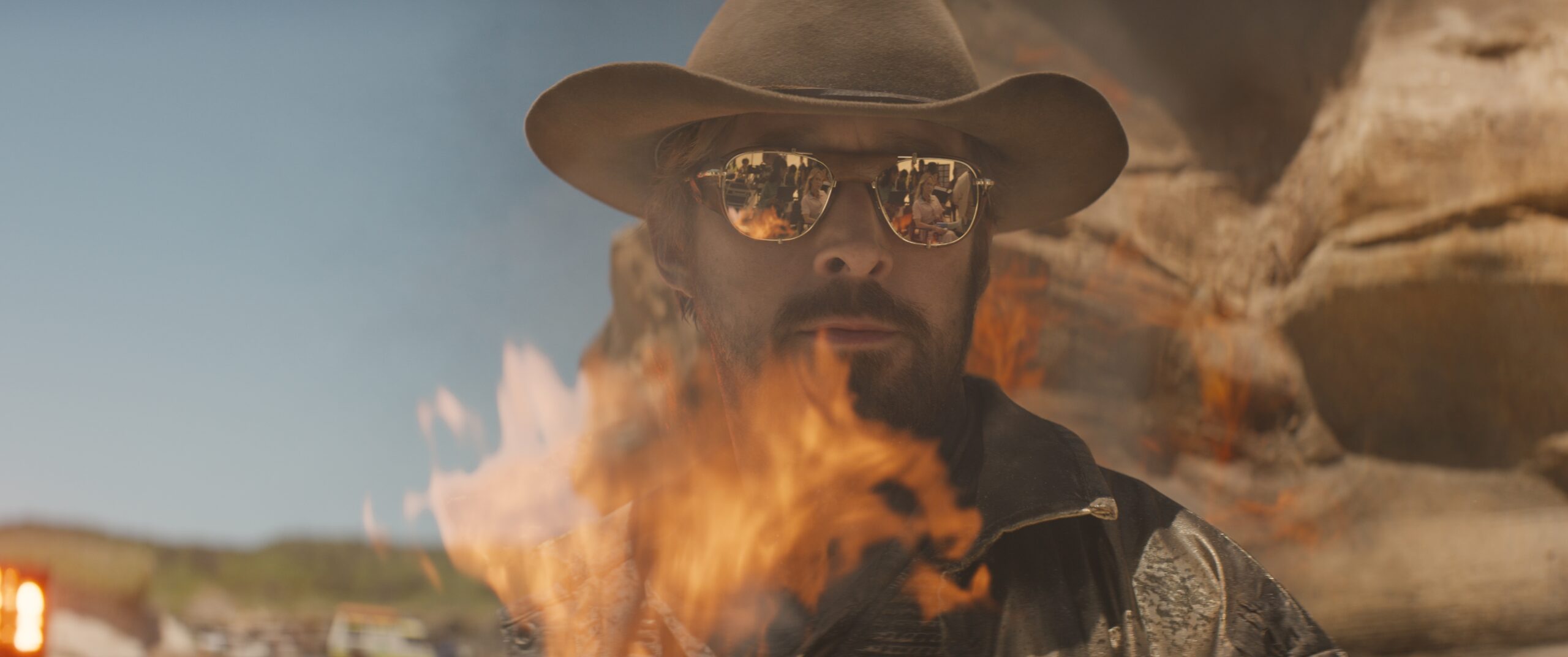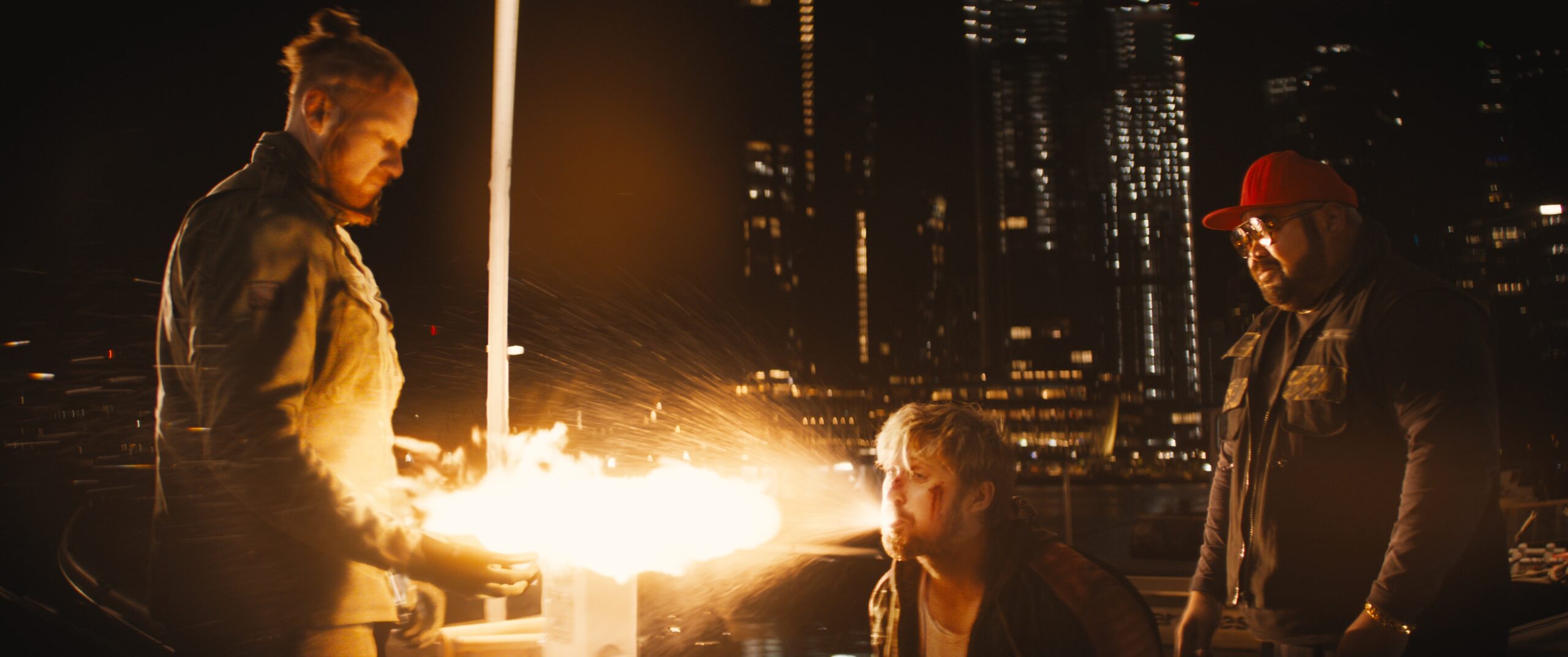


The original Fall Guy series was an 80s classic, with Lee Majors playing Colt Seavers, a stuntman who used Hollywood stunt tactics to capture criminals. In this 2024 feature film remake, director David Leitch drew on his own background in stunts to create a spectacular (and hilarious) homage to the skill of the “Fall Guy,” the stunt man who is regularly blown up, shot, crashed, thrown through windows and dropped from the highest of heights, all for our entertainment.
Cinesite worked hand-in-hand with director David Leitch, VFX Supervisor Matt Sloan and the stunts team to help bring the movie’s spectacular stunts to life. In all, we delivered around 355 visual effects shots, overseen by Cinesite VFX supervisor Jennifer Meire.
The plot of The Fall Guy follows battle-scarred stuntman Colt Seavers, as he attempts to unravel the mystery surrounding the disappearance of Tom Ryder, the star of Metalstorm, a movie he is working on.
As the audience might expect, the effects in The Fall Guy were weighted heavily towards SFX and stunts. With a rich history as a stuntman himself (Fight Club, Troy, Ocean’s Eleven, Mr. and Mrs. Smith), and directing action films, Leitch was committed to using physical techniques wherever possible. Where digital effects were used, they fit seamlessly with what had been captured in camera and are often seen side by side with the SFX. This in itself led to a challenge because audiences have a direct visual comparison; the digital additions needed to be absolutely seamless.
One of the most significant aspects of Cinesite’s work was in creating and adding fire throughout the movie, since there were often occasions where it was not possible, for safety reasons, to create shots any other way than digitally. In one sequence, Colt (Ryan Gosling) is performing a stunt for Metalstorm. Having been lit on fire, he is yanked against a rock before falling face down to the ground as the flames are extinguished by a crew member.
It was never going to be possible to achieve this close up shot involving the movie’s star without the use of digital fire. Coming from the stunt side, director Leitch knew exactly how the fire should look. He would say, “Have you ever seen real fire in that situation, close up? I have.”
The FX team ran simulations for the fire flickering behaviour, with realistic vorticity and buoyancy, in addition to creating its sudden dissipation at the end of the shot. Gosling’s performance was rotomated in order that the flames could be wrapped closely to his body. Further visual effects techniques were used to singe the actor’s clothes, so that it looks as though they are burning, with incremental damage.
In another spectacular shot involving fire, Colt is being held captive on a harbour side and the bad guys douse him with gasoline before advancing with a flame to set him alight. Having taken a mouth full of the fuel, Colt spits flames across them in a dazzling fire-breathing trick, before escaping in a speedboat.
Reference of fire-breathing stunts was provided by the production, but additional research was required of fireballs and similarly structured pyrotechnics in order to push the scale and intensity of the effect. Gosling had been filmed spitting out water, which resembles gasoline; Cinesite’s team added our simulated fireball FX, complete with smoke and embers, volumetric lighting and surrounding air turbulence, all to give a photorealistic quality.
The fire throughout Cinesite’s sequences was created using advanced computational fluid dynamics solvers and combustion models to simulate the turbulence of the flow of gasoline, or relevant gaseous fuel. In addition, in every shot the FX team carefully considered the air production of the fire, how it creates turbulence and its heat release.

The harbour-side fire breathing sequence is set on the Parramatta River beside Sydney Harbour Bridge. As Colt escapes in a speedboat with the bad guys in pursuit, one aerial shot shows Colt’s boat weaving between obstacles, establishing the wider Harbour location. At the climax of the sequence he drives hard into a floating pontoon, which explodes spectacularly.
Although much of the sequence was captured in camera on location in Sydney, Cinesite contributed both of these almost entirely computer generated shots. This involved recreating the boat, pontoon and surrounding water all digitally, in addition to the huge explosion. Creating the boat in CG crashing into the pontoon meant that the action could be carefully choreographed, and realistic impact dynamics and debris could be integrated into the shot, as well as lighting and water ripples.
Not all of Cinesite’s work was created with the intention of being unnoticeable. Earlier in The Fall Guy, in his quest to locate Ryder, Colt enters a nightclub to meet with seedy drug-dealer Doone. Doone laces Colt’s drink with an hallucinogenic drug before setting his bodyguards onto him. The ensuing exhilarating fight sequence is seen from Colt’s drug-enhanced slow-motion perspective, complete with psychedelic colours, lights and sparkles.
One of the biggest considerations for this sequence was how far to push the “magical” look, bearing in mind the broader realistic look of the rest of the film. Inspiration was taken from anime images, combined with various other sourced visual references and painted by our talented team of artists. Director Leitch wanted significant colour shifts and dynamic sparkle effects, which were achieved by shifting the RGB channels, blended with time warps. The fight was given a fluid and organic feel, with the conscious decision made not to give the psychedelic effects too graphic a feel. There’s an element of realism in the punch impacts, despite the fantastical elements. Chromatic aberration was added to the sparkles, along with lens flares and the kind of optical effects we often include in visual effects. Ultimately, we enhanced the humour of the situation by adding a little magic into Colt’s real world!
Various other visual effects were created for sequences throughout the film. These include the spectacular garbage truck car chase on Sydney Harbour Bridge, fight sequences in Ryder’s apartment, and other digital explosions and composites.
Cinesite VFX supervisor Jennifer Meire says, “The original series was known for its practical stunts and effects, so our approach was always influenced by the need to blend practical and digital methods. I feel that through our careful balance of the two, we won director David Leitch’s trust, and the result is a movie which is a fantastic, and very entertaining blend of all possible techniques.”